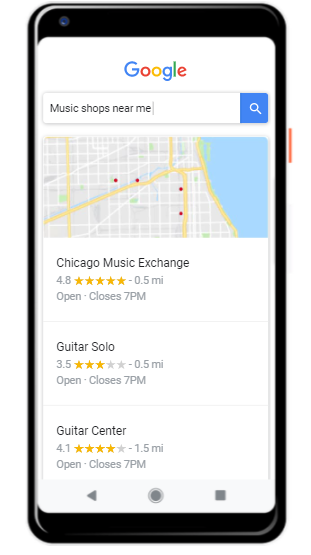Local & International SEO: Key Facts You Need to Know

Without a proper SEO strategy, businesses are missing a huge opportunity to strengthen their digital presence, an element essential to business success in this day and age.
SEO is a multi-layered process that is much more complex than one would think at first glance. There are several types of search engine optimisation that you can work on if you want drive loads of relevant traffic to your website. In this blog we are going to look into two: international and local SEO.
What is international SEO?
International SEO, also called global SEO, refers to a set of search engine optimisation activities that help you rank better internationally, as the name already suggests. What this means is that you target a specific language, country, or both.
Whether you will aim for language or country targeting or a completely internationalised website depends on the needs of your business. For example, if you’re an e-commerce business selling mugs with slogans in German, you won’t only target Germany, but also Switzerland, Austria, and any other area dense with German-speakers.
Benefits of international SEO
If you’ve been planning on expanding your business to target customers who come from various regions or who speak different languages, then international SEO should be an indispensable part of your digital strategy.
If you’re wondering whether investing in international SEO is worth it, the fact alone that Google has 192 search engines differing by country and region should speak for itself. Moreover, some of the benefits of international SEO that your brand could reap are:
- Better UX (user experience) for international customers
- Stronger brand visibility & audience expansion
- Stronger brand reputation and authority
- Increase in website traffic & higher conversion rates
How to do global SEO?
A technically optimised website is a prerequisite for any further kind of optimisation. So, before you embark upon an international SEO journey, make sure that your technical SEO strategy is up to standard.
Once you’ve decided to do international SEO, there are a few vital best practices that you need to follow. One of them is properly structuring your URL to target specific countries and/or languages. You can do this by using a ccTLD, subdomain, subdirectory or subfolder. You can also use a gTLD with language parameters or create a completely different domain name.
Your ccTLD (country code top-level domain) is the two-letter code after the final period in your domain name indicating the territory where your website is registered. In www.example.de, it would be “de”, which indicates Germany.
If you opt for a subdomain, it could look like this: de.example.com; your subdirectory would be www.example.com/de; your generic top-level domain (gTLD) with language parameters would be www.example.com/?lang=de.
If you opt for a different domain name, it could be something like www.examplegermany.com. Do keep in mind that they all have their pros and cons, so be sure to evaluate each option carefully.
In order to target a specific language, you can use hreflang or language meta tags, pieces of code that signal to search engines which languages your site is available in.
In addition, make sure your translations are done by people, not machines. Machine translations will be difficult to read and will definitely damage your reputation as a business. Moreover, it’s recommended not to have your website automatically switch to a particular language/country version. Let website visitors have the option to select the website version of their choice.
Aside from all this, never forget your content. If your resources allow it, make sure that you are regularly posting content tailored not only to the language but also the culture of your target audience. Be careful about the kind of phrases, tone and humour that you use.
If you follow all the above practices, it will be easier for search engines to recognise what versions of your website are available with respect to regions and languages. In addition, website visitors will feel appreciated and have a good impression of your business.
What’s the deal with local SEO?
Local SEO is the act of optimising your website for local searches, as its name suggests already. Essentially, local SEO activities are meant to enhance the visibility of brick-and-mortar businesses to potential customers nearby.
Local SEO is distinct from general SEO, as it has a particular purpose it focuses on. The ultimate goal is for your business to dominate close-range search results and catch the eye of customers in your vicinity.
Why does local SEO matter to your business?
Studies have shown that 76% of people who search for a service nearby will actually visit the business within 24 hours. And even without these stats, there’s no denying that local SEO activities can boost your business in many ways. Here are some of the most prominent advantages you can gain:
- More local web traffic
- Increase in foot traffic
- General improvement in online visibility
- Increase in brand authority
- Increase in customer loyalty & returning customers
Local SEO best practices
As previously mentioned, you cannot really do much without completing technical SEO activities first. So, once you’ve made sure your website is technically optimised, you can begin focusing on local search engine optimisation.
There are a number of steps you can take to highlight your business in relevant local searches. In this blog, we will briefly look at a few of them.
Keyword research is the essential first step of any SEO. In this case, it needs to be specially conducted for potential local searches. One of the ways to do this is to compile a list of all your services and use tools like SEMrush, Ahrefs or Google Trends to see how people in your area are searching for them.
It’s always a good idea to try ranking for search terms made in the “SIL” format, or “Service in Location”. Of course, you should always keep track of how difficult it would be to rank for the keywords you’ve come up with. For instance, you can do this through the Keyword Difficulty indicator on SEMrush, which should be below 50 if you’re looking for a high chance of ranking.
 Local search result example
Local search result example
One of the most important parts of local SEO is your Google My Business account, as it is one of the top ranking factors on Google. Be sure to enter accurate information in regard to your address, exact location, phone numbers and services, and verify that information. Update your account as soon as there is a change and keep your GMB account active.
It’s also worth encouraging customers to leave reviews online and, of course, responding to the reviews you receive. Make an effort to engage with your customers on social media as well.
On-page SEO is a must as well, not just for local SEO but also for the general wellbeing of your website and the user experience on it. This involves optimising elements like your page titles, meta titles & descriptions, page content, URLs, mobile responsiveness, speed and so on.
Conclusion
With digital transformation and a strong digital presence being key to business survival nowadays, it’s vital for most brands to keep up continuous SEO efforts that’ll enhance their visibility and drive more customers to them. In this blog, we scratched the surface in regard to some activities that need to be done if your goal is to have successful local and/or global SEO strategy.
If you are curious about international and local SEO and you’re looking for more information and expert advice, or you’re looking for professional SEO services, feel free to reach out to us! Digital agency GRM Digital has a team of professionals who will help you fortify your brand’s online presence.
